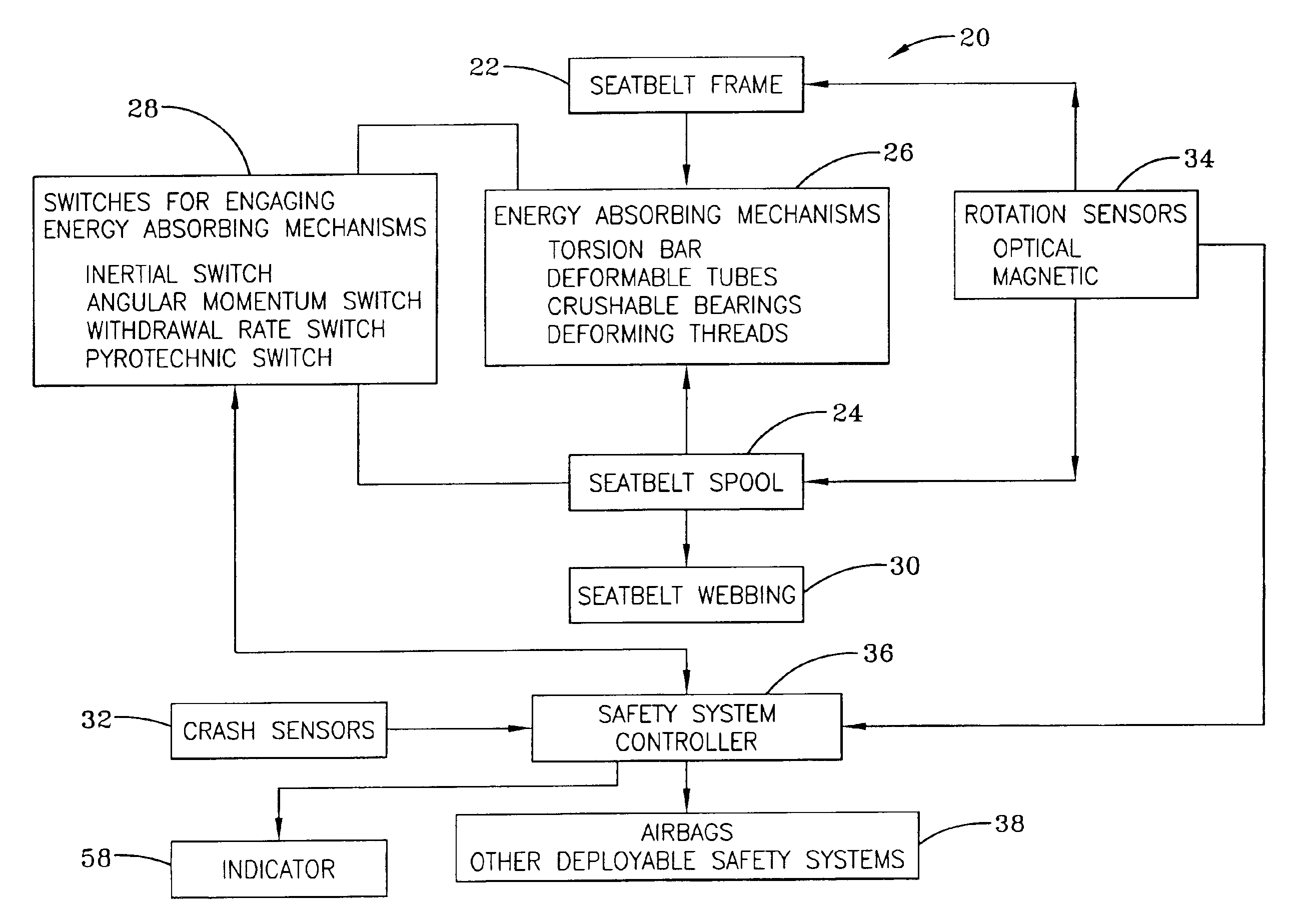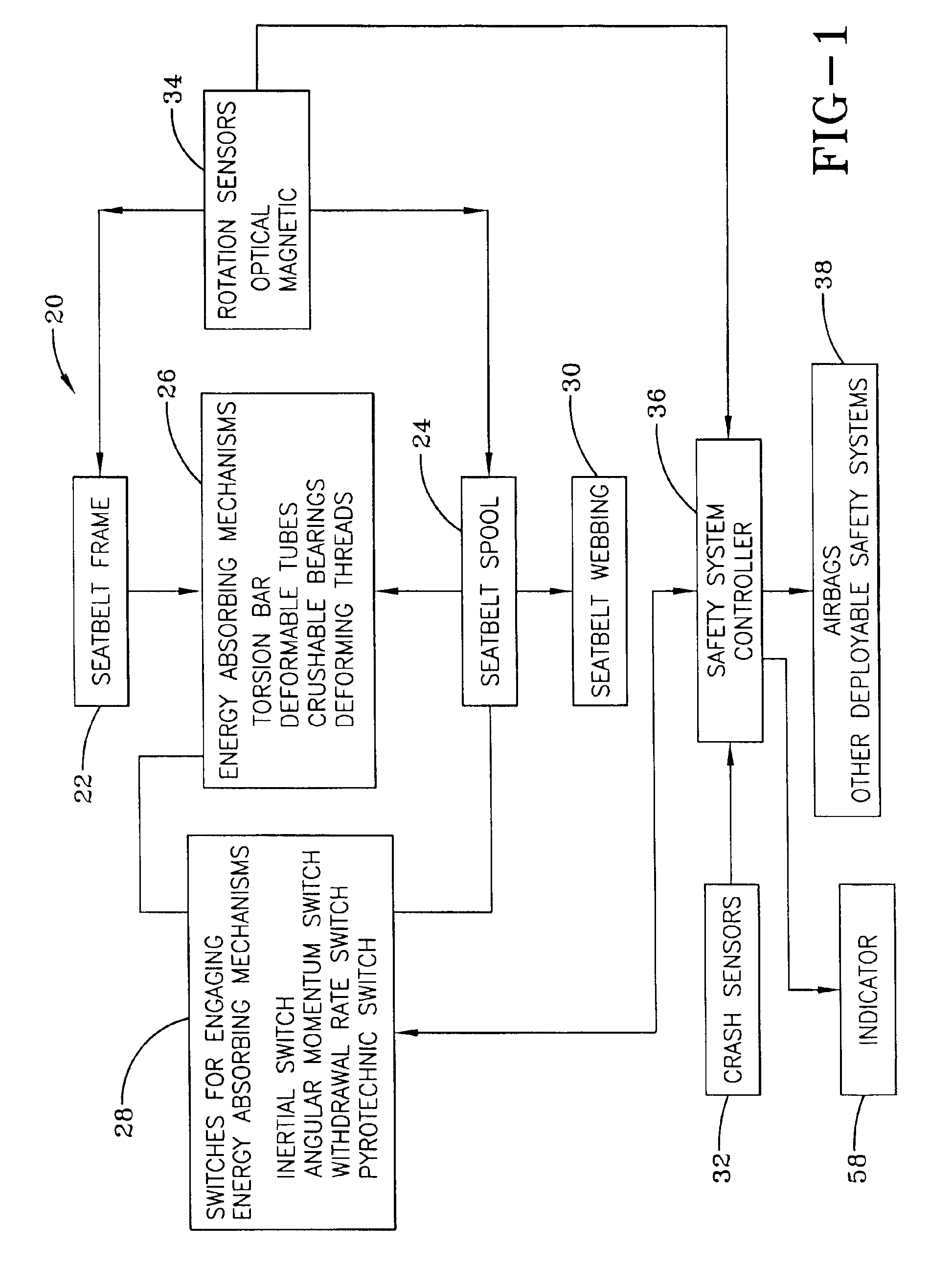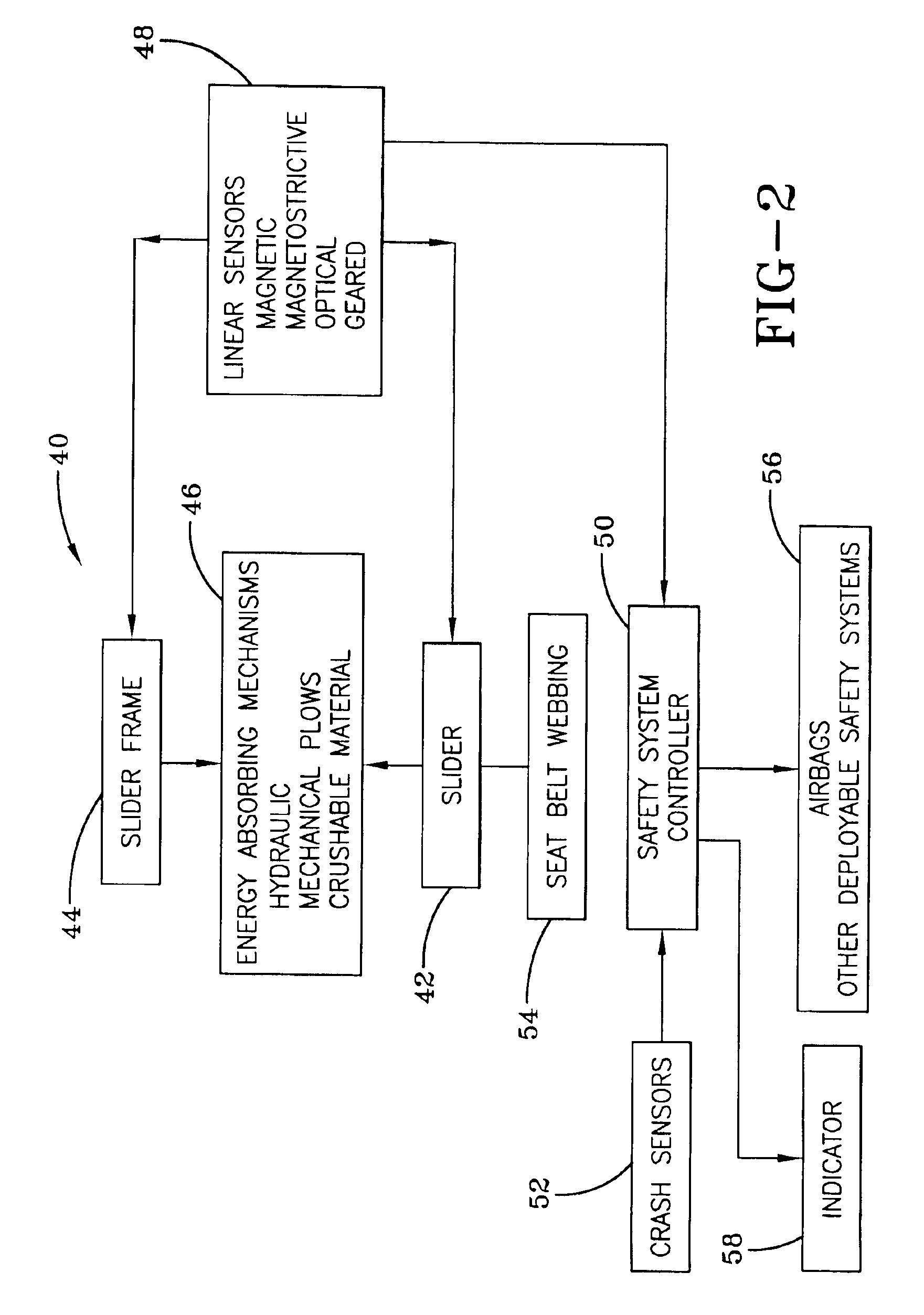Seat belt sensing for vehicle occupant load and misuse
a seat belt and vehicle occupant technology, applied in the field of seat belt use indicators and sensors, can solve the problem of occupant weight sensors reflecting higher loads
- Summary
- Abstract
- Description
- Claims
- Application Information
AI Technical Summary
Benefits of technology
Problems solved by technology
Method used
Image
Examples
Embodiment Construction
Referring more particularly to FIGS. 1-2, wherein like numbers refer to similar parts, a vehicle safety system 20 is illustrated schematically in FIG. 1. A seat belt frame 22 rotatably supports a seat belt spool 24. An energy-absorbing mechanism or load limiter 26 such as a torsion bar as illustrated, for example, in U.S. Pat. No. 6,012,667, is positioned between the seat belt frame 22 and the seat belt spool 24. An engagement switch 28 is arranged to connect or lock the energy-absorbing mechanism 26 between the seat belt frame 22 and the seat belt spool 24 upon the occurrence of one or more conditions. The engagement switch 28 is typically an inertial switch, or engagement mechanism, that locks the rotation of the seat belt spool 24 by engaging the energy-absorbing mechanism 26 whenever the vehicle experiences an acceleration above a selected threshold. Alternatively, the seat belt spool may be engaged to the energy dissipation mechanism by an angular momentum switch that responds ...
PUM
 Login to View More
Login to View More Abstract
Description
Claims
Application Information
 Login to View More
Login to View More - R&D
- Intellectual Property
- Life Sciences
- Materials
- Tech Scout
- Unparalleled Data Quality
- Higher Quality Content
- 60% Fewer Hallucinations
Browse by: Latest US Patents, China's latest patents, Technical Efficacy Thesaurus, Application Domain, Technology Topic, Popular Technical Reports.
© 2025 PatSnap. All rights reserved.Legal|Privacy policy|Modern Slavery Act Transparency Statement|Sitemap|About US| Contact US: help@patsnap.com



